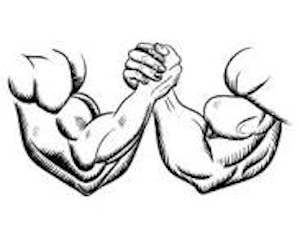Next time you read a work of fiction, pay attention to how the author develops and maintains conflict and tension. This is especially important in the genres that promise tension, namely, Thriller, Suspense, Mystery, Horror, and even Romance.
Ted Dekker teaches in his Creative Way writing course that every chapter must contain conflict. He wasn’t proposing that every chapter include a battle. There are many types and levels of conflict. But conflict leads to tension. Tension leads to the eager turning of pages.
Wanting to further my reputation for writing “page turners,” during every writing session I ask myself, “Where’s the conflict? Is there tension?”
I aim to incorporate an element of conflict into each chapter. Below are 14 types of conflict I have used.
- Choice A versus Choice B (or C)
- Decision versus no decision
- Spiritual versus earthly
- Uncertainty versus certainty
- God’s Will versus free will
- Ego versus Holy Spirit
- The known versus the unknown
- Trust versus distrust
- Love versus hate
- Truth versus deceit
- Life versus death (spiritual or physical)
- The present versus the past
- Good versus evil (the ageless standby)
- Who the protagonist is versus who the protagonist believes to be
In my opinion, conflict serves three purposes in a novel. It adds tension; it provides the stage or the test by which the protagonist will transform during his or her journey; and conflict serves to give the reader insight into the characters.
In whatever novel you’re reading now, see if you can identify the conflict (large or small) of each chapter and how it contributes to your reading experience.

